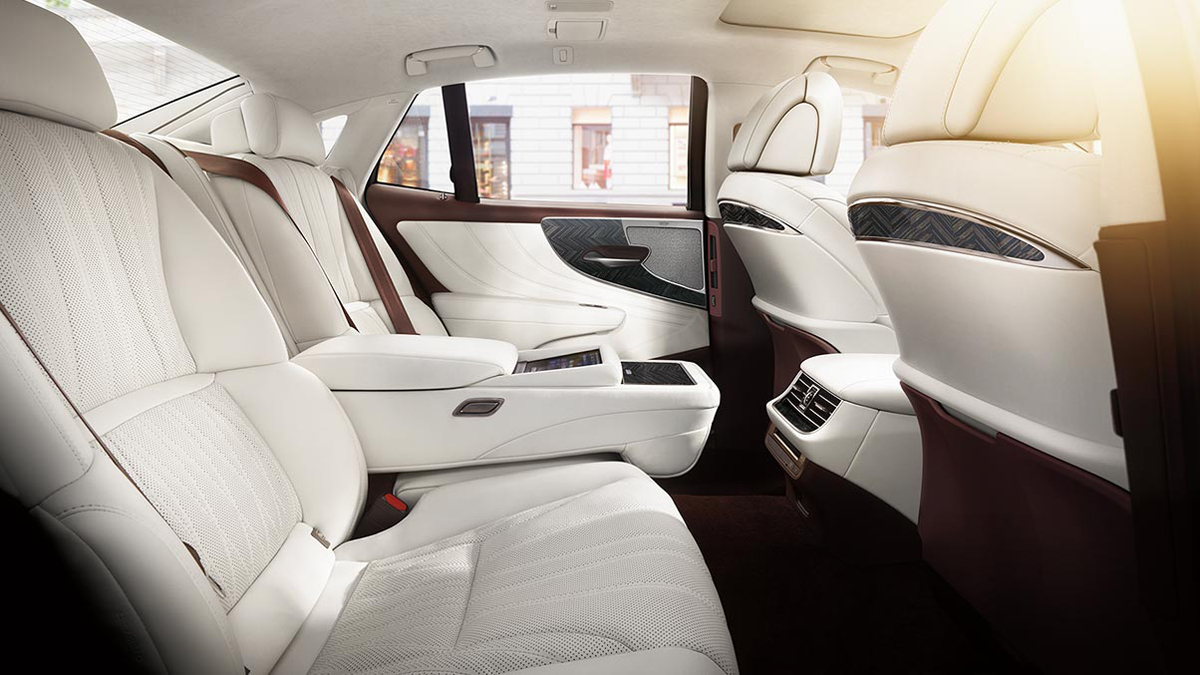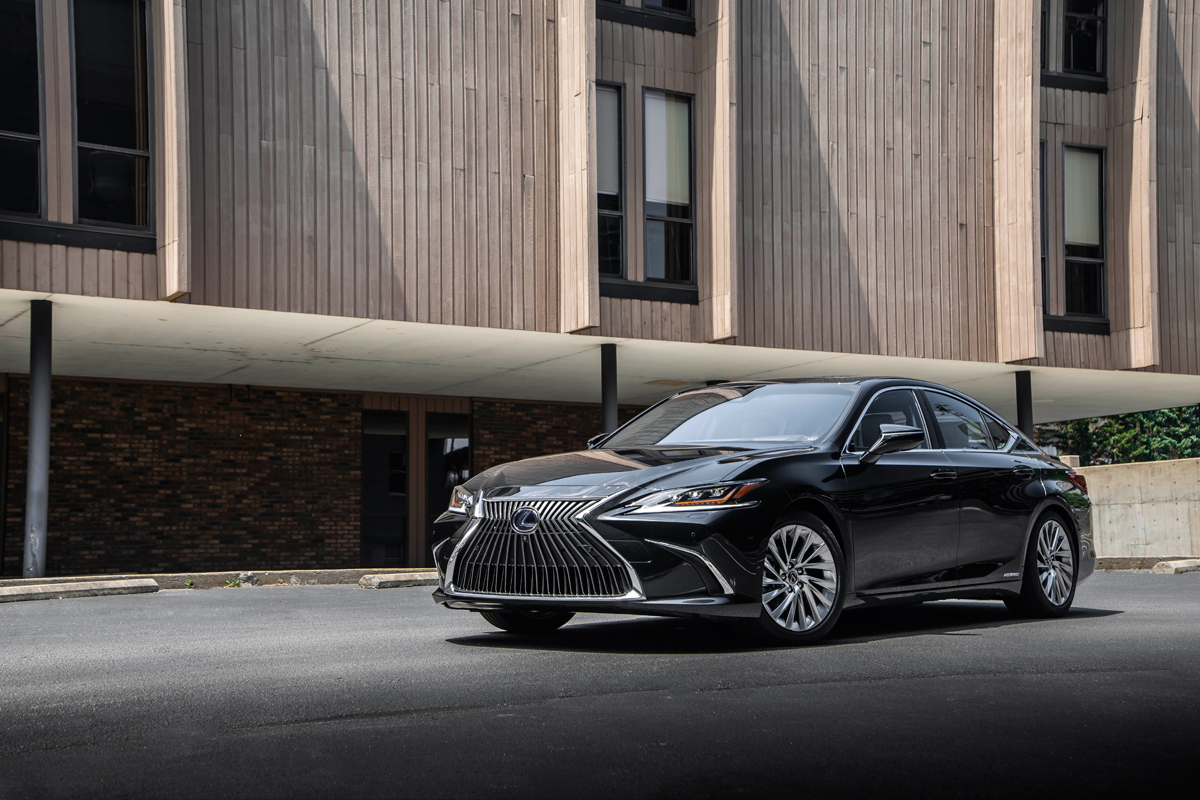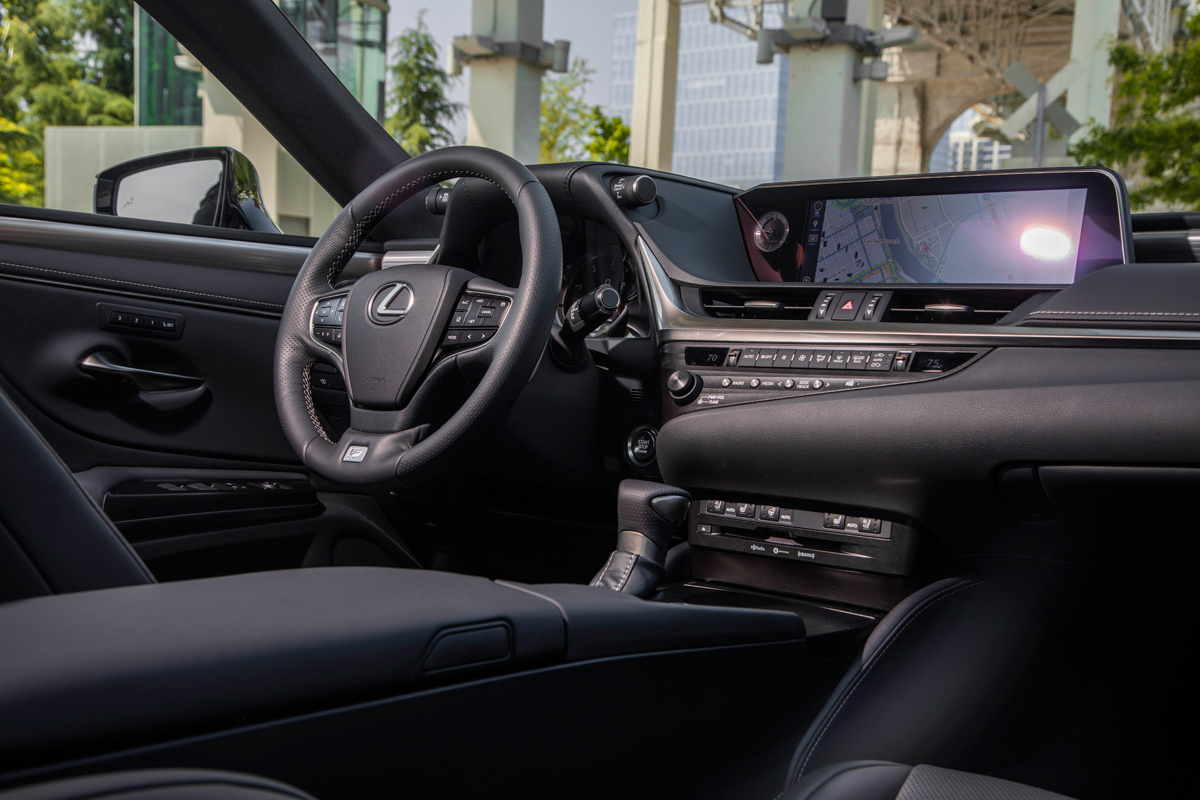Lexus International President Yoshihiro Sawa on the Brand’s Design Foundations
“Simple is boring” and other learnings at the 2019 ES release in Nashville

Like all automakers, Lexus has enjoyed both its design hits and misses. But few brands boast peaks as high and some valleys as low, which makes Lexus’ design philosophy—what they dub L-Finesse—one of the more polarizing and scrutinized schools of aesthetics in the wild and varied automotive landscape. Add to the fact they sell north of 300,000 vehicles a year in the US alone, and the microscope is even further dialed in.
This summer, Lexus is releasing the seventh generation of their best-selling car, the ES. During its launch in Nashville we got a chance to speak with International President Yoshihiro Sawa to discuss the overarching philosophy behind L-Finesse and its specific execution in their new mid-size sedan. In all of Lexus, only the RX crossover sells more vehicles, so perfecting the ES styling is paramount to the luxury brand’s continued success. “It’s a complicated answer,” Sawa says, when asked to describe the philosophy behind L-Finesse. “It’s hard to explain simply; it’s like a religion.”
Established more than a decade ago, L-Finesse is based on the highly particular Japanese sense of beauty. It’s a very specific school of aesthetics that’s different from not only its European counterparts, but also those of its nearby Asian neighbors. “The L stands for ‘leading edge’ and finesse is ‘finished level,’ sophistication,” he notes. “So leading edge and sophistication have to be blended together, but without compromise. Two opposite elements, combined in harmony to create a new sense of value.”
To execute their philosophy, the Lexus design team created three fundamental principles that every product must satisfy: Incisive Simplicity, Intriguing Elegance, and Seamless Anticipation. Sawa took us through each principle, explaining through several design features on various Lexus models.

Incisive Simplicity
“So why incisive? Because just simple is boring,” says Sawa, leaning back in the deep leather seat of the flagship executive saloon, the LS. Although we’re here to discuss their volume selling ES, the LS makes a perfect backdrop for this dialogue because the vehicle is the apex manifestation of Lexus’ interior design (without question, Lexus’ jaw-dropping LC Coupe is the gem of the brand’s exterior design).
Simple is boring
He points to the front seat, where horizontal wood and metal elements on the dashboard meet with the front corner of the door, creating a nexus of materials and textures—none more eye-catching than the Mark Levinson speakers. The grille holes look like pebbled leather, organic and yet rendered in metal—a pattern inspired by the celluloid structure of a leaf.
Sawa-san makes sure to note how this complicated texture is located immediately next to a very simple material. “It creates a new feeling,” he continues. “For example, in a Japanese garden there are random stones, but eventually the rows are very straight even if the details are very complicated. But at a glance, it’s very simple. Such kind of a pure method has to be required when we design something. This is a very Japanese sense of beauty.”

Intriguing Elegance
“Intriguing Elegance also is more than just elegance. We try to create a feeling of space, atmosphere. Sometimes these things can spoil harmony, but again we don’t compromise,” Sawa explains. “That kind of solution can be found in a Japanese house. That sense of beauty created our L-Finesse philosophy.” The way Sawa describes this second element is a bit more ephemeral: a holistic simplicity in an entire object, but comprised of elements that can be quite complex. A juxtaposition of elements that is almost a paradox—like a Bonsai tree in a clean, empty room. “A Bonsai tree is very complicated, but in total it is very simple. That kind of combination is very important,” he continues.
For an example of this level of Intriguing Elegance he highlights cut-glass panels on the door of the LS. These exquisite aesthetic elements were innovated by Lexus exclusively for their flagship vehicle, and are the most salient sign of the brand’s commitment to Takumi (aka master craftsmanship). Carved by Kiriko glassworkers, these elements are handcrafted to Baccarat crystal-levels of detail and then polished by hand. Tilt your head and the bright Tennessee sunlight plays with its myriad surfaces like a master diamond grader examining a stone. This is no accident: Lexus designers spent countless hours exacting the precise pattern they wanted to optimize the particular glint.
The glass elements are placed next to a complex weave of silk pleats that cover the rest of the door panel. This is another sign of Takumi craftsmanship, as these three-dimensional pleats were developed by a Kyoto-based origami master, and painstakingly folded by hand into perfect triangular scales.

For individualization among their vehicles, Lexus is adamant about creating different versions of their signature Spindle Grille. “From a distance everybody notices, ‘Oh, aLexus is coming,’ because the Spindle is there, the Arrowhead headlamp is there,” notes Sawa. “But each car has its own execution.” Even the Spindle, which can appear homogeneous if only quickly scanned, can be greatly varied due to its three-dimensionality. Most grilles exist in 2D, but the Lexus iterations boast an exceptional amount of depth—if you look at them from the side, there is as much as half a foot of convex movement.
Even the mesh patterns inside the framework of the Spindle are significantly different from one another, perhaps none more so than in the new ES. Vertical slats are employed in place of the complex lattice that define other Spindles (the ES F-Sport package does include a more traditional mesh pattern).

Seamless Anticipation
The final shibboleth of L-Finesse—Seamless Anticipation—is the brand’s physical manifestation of Omotenashi: a Japanese term for hospitality that is qualitatively beyond what the American service industry demands. Anyone who has stayed at a top hotel in Tokyo will recall with great delight this almost maniacal level of attention to detail and service. It’s that sort of desire for perfection that informs many Japanese brands and craftspeople.
“We call it ‘Timing Design,'” Sawa says. “In order to anticipate a customer’s behavior or attitude, we have to think about the time element. So from closing the car, opening the door, getting in, starting the drive—we always think about those kinds of sequences. And also the exterior: how to make the ‘surface movement,'” he says, mentioning the way light moves along the sheet metal of a car. “The variety of sunlight conditions, or maybe artificial lights—in front of a casino, or in front of the hotel, or a California sunset” all comes into play. Sawa explaining, “We imagine lots of conditions, and then we decide the shape of a fender, etc.”

While the Omotenashi experience begins at the dealership, it is manifested in the cabin layout as well. One example in the new ES model’s interior design is the placement of the Driving Selector—a metal dial poking out from the top of the dash above the steering wheel like an antler nub. “You don’t have to change the eye position,” Sawa says, pointing out the Driving Selector’s eye-level placement, “You can reach it instantly.”
Its ergonomic location encourages repeated use: once you start cycling from Eco to Normal to Sport on the Driving Selector, you will find yourself using it even more. There are other details as well, some as simple as the bevel angle of the vent knobs. “When you move it up and down you always feel the same kind of pressure so you can control it easily as a blind touch,” he explains. This is certainly a small detail, but small details are the very foundation for Omotenashi—as they are for each of Lexus’ trio of aesthetic laws. “Those three elements, and those three feelings, we always satisfy,” vows Sawa-san. “So eventually we reach a level that is completely different from previous, or existing, European brands.”
Images courtesy of Lexus












